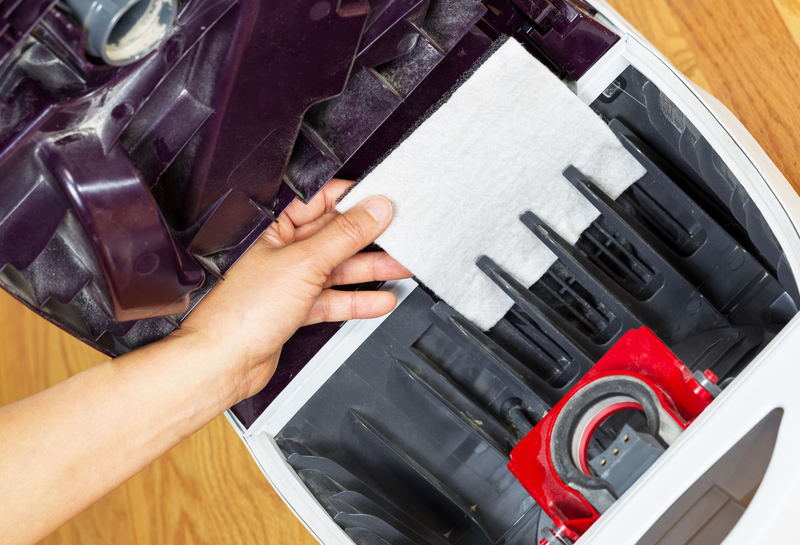Discover Effective Ways to Eliminate Damp Odors
Posted on 24/09/2025
Discover Effective Ways to Eliminate Damp Odors
Has your home been plagued by persistent, musty smells? If so, you're not alone. Damp odors are a common household problem, often leading to discomfort, health concerns, and even damage to property. In this comprehensive guide, we'll walk you through effective ways to eliminate damp odors. Enjoy fresher air, improved well-being, and a cleaner living space by tackling those stubborn smells at their source!

Understanding Damp Odors: Causes and Consequences
Before we dive into solutions for musty odors, it's vital to understand what causes these smells in the first place. Recognizing the source empowers you to eliminate damp smells completely, not just mask them.
What Causes Damp Odors?
- Poor Ventilation: Rooms with little airflow trap moisture, leading to stale, musty air.
- Leaks and Water Damage: Plumbing leaks, roof leaks, or basement flooding create the perfect environment for mold and mildew growth.
- High Humidity: Humid climates or bad insulation draw and trap moisture inside your home.
- Mold and Mildew: Both thrive in damp environments, producing the musty, unpleasant smell recognized as damp odor.
- Wet Carpets and Fabrics: Carpets, rugs, and fabrics absorb moisture easily and are slow to dry, harboring odors.
Why You Must Address Damp Odors Quickly
Ignoring damp odors can lead to more than just discomfort. Prolonged exposure to dampness can support mold growth, trigger allergies, and even cause respiratory problems. Damp smells can also signal hidden structural issues such as leaks or rot that must be addressed swiftly.
Comprehensive Strategies to Eliminate Damp Odors
Let's explore a variety of effective ways to tackle musty odors and ensure long-lasting freshness in your home.
1. Identify and Fix the Source
- Inspect for leaks in plumbing, roofs, and basements.
- Look for visible signs of mold or water damage.
- Feel for dampness on walls, floors, and ceilings.
Tip: Use a moisture meter to detect hidden dampness.
2. Improve Ventilation
Stale air encourages musty odors. Boost airflow to freshen up your living space:
- Open windows and doors regularly to let air circulate.
- Install or use exhaust fans in the kitchen, bathroom, and laundry room.
- Consider adding ventilation grilles to enclosed spaces such as wardrobes or under stairs.
Strong ventilation helps sweep away bad smells, lessen moisture, and prevent future odor buildup.
3. Control Humidity Levels
Keeping indoor humidity below 60% can dramatically reduce condensation and dampness. Here's how to eliminate musty odors by managing moisture:
- Use a dehumidifier in problem areas, especially basements and bathrooms.
- Use air conditioning strategically to keep interior air dry during humid seasons.
- Fix any sources of unnecessary moisture, such as dripping pipes or poorly sealed windows.
4. Deep Clean and Disinfect Affected Areas
Effective cleaning solutions to eliminate damp odors include:
- Vinegar Solution: Mix equal parts water and white vinegar in a spray bottle. Spray on affected surfaces and allow to air dry to neutralize odors.
- Baking Soda: Sprinkle on carpets, upholstery, or mattresses. Let it sit for several hours or overnight, then vacuum thoroughly. Baking soda naturally absorbs odors and moisture.
- Hydrogen Peroxide: Use for spot-cleaning stubborn moldy areas. Always test a discreet area first.
- Commercial Mold and Mildew Cleaners: Designed to eliminate spores and smells at the source for severe or widespread outbreaks.
Remember to wear gloves and a mask when tackling mold or mildew, and ventilate the area well during cleaning.
5. Address Soft Furnishings and Carpets
Upholstery, rugs, curtains, and soft furnishings can trap and retain damp odors.
- Launder washable fabrics with vinegar or baking soda for deep odor removal.
- Steam clean or professionally treat carpets and upholstered furniture.
- Consider replacing items that remain musty despite thorough cleaning.
6. Remove and Prevent Mold and Mildew
Because mold is a leading cause of damp odors, tackling it is crucial:
- Scrub non-porous surfaces (tiles, glass, plastics) with a bleach solution or commercial mold remover.
- For porous materials severely affected by mold, such as ceiling tiles or insulation, replacement may be necessary.
- Fix the underlying source of moisture to prevent recurrence.
7. Freshen the Air Naturally
Once you have removed the source of the odor, keep spaces fresh with these tips:
- Place activated charcoal bags or open bowls of baking soda in damp-prone areas; both are excellent at absorbing lingering odors.
- Use essential oils like lavender, eucalyptus, or tea tree to impart a clean, pleasant scent while enjoying antimicrobial benefits.
- Grow air-purifying houseplants such as peace lilies, spider plants, or Boston ferns to help maintain air quality.
Preventing Damp Odors from Returning
Prevention is always better than cure. Here's how to stop damp smells before they start:
Regular Home Maintenance
- Inspect roofing, gutters, and downspouts to ensure they divert water away from your home.
- Seal exterior walls, windows, and foundations against leaks.
- Clean and replace air filters regularly for proper airflow.
- Check under sinks and in utility rooms for slow leaks.
Adopt Smart Home Habits
- Hang wet towels and clothes promptly instead of letting them pile up.
- Use lids on cooking pots and pan when boiling water to reduce steam build-up.
- Wipe down bathroom walls and floors after showers or baths.
- Don't store cardboard boxes, paper, or fabric items directly on basement or garage floors.
Monitor and Manage Indoor Humidity
- Invest in a hygrometer to monitor indoor humidity and act quickly if it rises above 60%.
- Set dehumidifiers or air conditioners to run in auto mode during especially humid weather.
- Run kitchen and bathroom fans while cooking, bathing, or washing laundry.
Expert Tips for Specific Problem Areas
Eliminating Musty Odors in Basements
The basement is notorious for persistent damp smells due to its underground nature. Take these targeted steps:
- Seal foundation cracks and waterproof basement walls.
- Always use a dehumidifier; empty and clean it regularly.
- Keep basement windows open or install a small fan for improved airflow.
- Store items on shelves rather than directly on the ground, and avoid cardboard boxes.
Getting Rid of Damp Odors in Bathrooms
- Install a powerful exhaust fan and make sure it vents outside, not into the attic.
- Always leave the door or window open after hot showers to allow steam to escape.
- Clean tiles, grout, and drains regularly to remove soap scum and mildew.
Handling Closet and Wardrobe Mustiness
- Keep closets organized and avoid overpacking them, allowing for air circulation.
- Place moisture absorbers, such as silica gel packets or activated charcoal, inside closets.
- Launder clothes regularly and dry thoroughly before storing.
- Install a small battery-operated fan or leave the door slightly ajar whenever possible.

When to Call in Professionals
Sometimes, professional help is required to eliminate severe dampness and musty odors:
- If structural water damage or hidden mold is suspected (e.g., inside walls or insulation).
- Persistent odors return despite your best efforts and prevent normal living.
- Members of your family experience aggravated respiratory issues or allergies.
- You plan to sell your home and need certified proof that the odor source has been removed.
Expert remediation ensures that dangerous mold and mildew are removed safely and thoroughly, restoring a healthy environment.
Final Thoughts: Enjoy a Fresh, Inviting Home
By understanding the root causes and consistently applying these effective ways to eliminate damp odors, you'll create a fresher, healthier living environment. Address sources directly, keep your home dry, and introduce odor-neutralizing techniques to prevent mustiness from returning.
Remember: Regular maintenance, smart cleaning habits, and prompt attention to leaks or spills are your best defense.
Frequently Asked Questions
- What is the fastest way to get rid of a musty smell in a room?
Increase ventilation, use a dehumidifier, clean surfaces with vinegar solution, and sprinkle baking soda on soft furnishings. - Can air purifiers help with damp odors?
Yes, especially models with HEPA and activated charcoal filters to remove spores and smells from the air. - Is it necessary to remove all mold to eliminate odors?
Absolutely. As long as mold remains, it will continue to produce odors and potentially impact health.
Ready to eliminate your home's damp smell for good? Take action today using these proven methods, and breathe easy in your refreshed, odor-free space!





